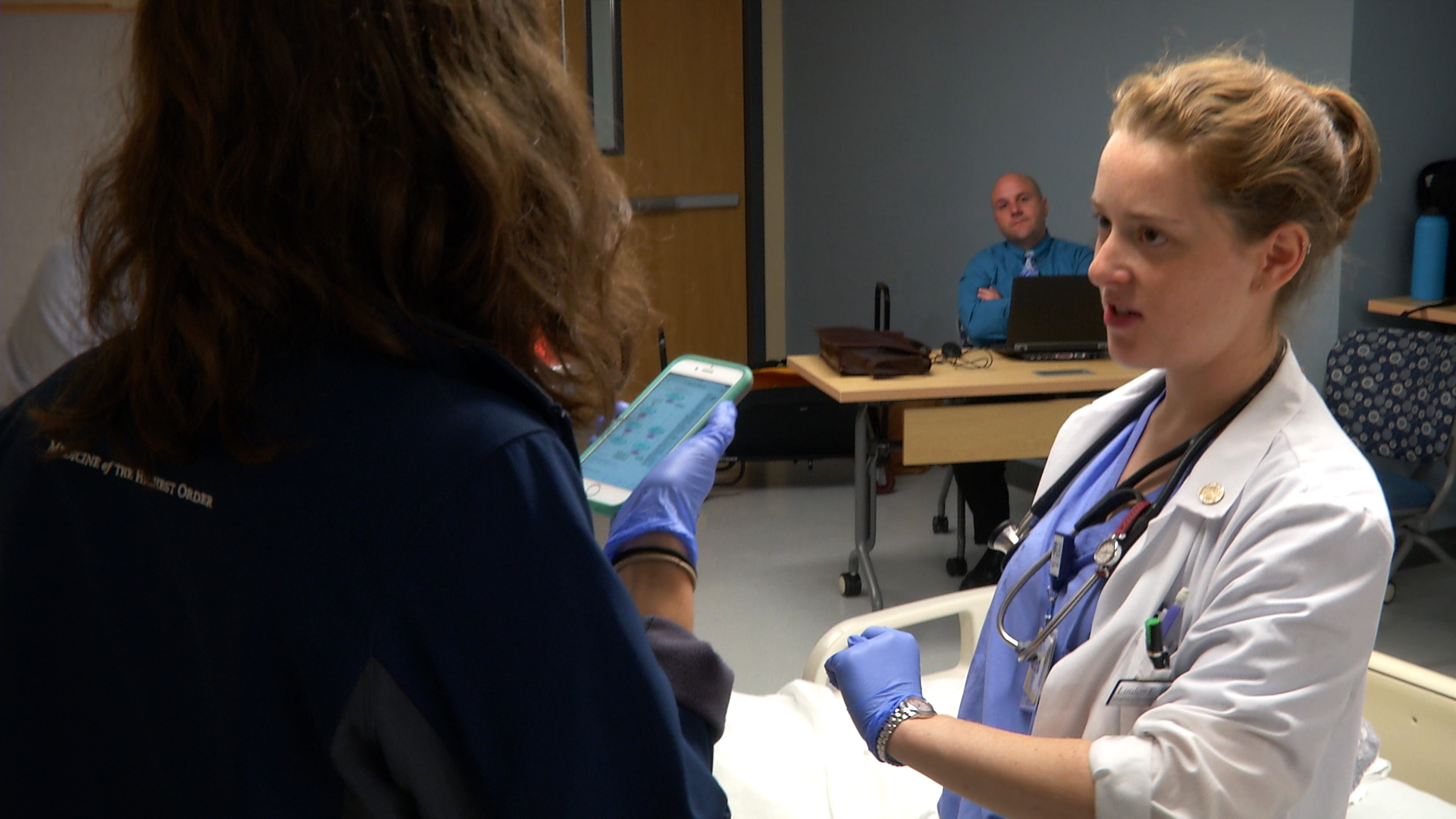Learning Spaces

The Institute for Innovative Education provides a network of spaces that support learning and development for the University of Rochester Medical Center.
Center for Experiential Learning Spaces
The Center for Experiential Learning consists of 70,000 sq. feet of educational space, a comprehensive simulation center, six large auditoriums, thirteen problem-based learning rooms, a robust standardized patient program, educational technology support, media services and educational programming staff.
Our Problem-Based-Learning (PBL) classrooms, which are spaces dedicated to medical student only access, offer a PC, a large screen display, several display connectivity options (including Apple TV for wireless display of student and faculty iPad) and wall covered dry/erase boards for note taking, planning and other study. Each of these classrooms feature a fully equipped ‘mock’ physician office where students practice physical exams and health history interviewing skills with standardized patients. A simulation capture system, EMS SimulationiQ, records video and audio of student and standardized patient interactions for immediate debrief and self-critique. The EMS SimulationiQ system uses a series of fixed PTZ cameras and ceiling microphones for recording, but is also flexible and can allow an iOS based device like our student iPad to be an additional ‘video in’ source for capturing simulation events.
Automated video recording through Panopto is available in four large classroom spaces that are heavily used by the medical school phase one and phase two courses. Lectures are automatically recorded, uploaded to Panopto, and available for students to review for 72 hours after the class session, as well as for 72 hours prior to the exam on that material.
Edward G. Miner Library Spaces
The Edward G. Miner Library consists of approximately 30,000 sq. feet of educational space offering a variety of environments in which to study; quiet spaces, classrooms and group study rooms. The Bhagat Classroom is Miner’s largest and most flexible classroom. It is equipped with an 84-inch 4K display, lectern and connected PC, multiple connectivity options for BYOD and Apple TV connectivity.
In addition to study space and resources, the library maintains a recording room with equipment and authoring software for faculty and students needing to create instructional videos, audio recordings and interactive modules. Libraries are “third spaces” in academic medical centers in which they provide valuable space for the informal connections surrounding traditional learning. While we will always preserve quiet space, we recognize that our students also need space to roll up their sleeves and work together in creating meaning in their learning.
Incorporating the Use of Technology
Educational IT staff regularly meet with stakeholders throughout the School of Medicine and Dentistry to review the usage of Apple technology in the support of our educational mission. Curriculum is reviewed, modified and optimized for presentation and study on faculty and student iPad devices. New student iPad distribution and configuration processes are regularly reviewed for accuracy and relevance to students. Newly released hardware from Apple is tested and reviewed to determine if it has a place in our classrooms and labs, or in the hands of our students, staff and faculty. Medical students study and interact with several apps supplied by the School of Medicine and Dentistry. These apps are purchased through Apple School Manager and are distributed via our MDM as incoming students configure their new iPad. We have Apple certified service providers on staff who support basic repair and support functions for Apple hardware. Our IT staff also maintain good working relationships with our Apple support team (sales and technology support personnel). They work with us to collaborate on new ideas and strive to keep pushing our envelope in terms of how we use and integrate Apple technologies in our spaces and in the way we educate.
As the Medical Education curriculum evolves to meet the changing needs of students, we look forward to Apple technology continuing to play an integral part in the training of our future physicians and scientists.